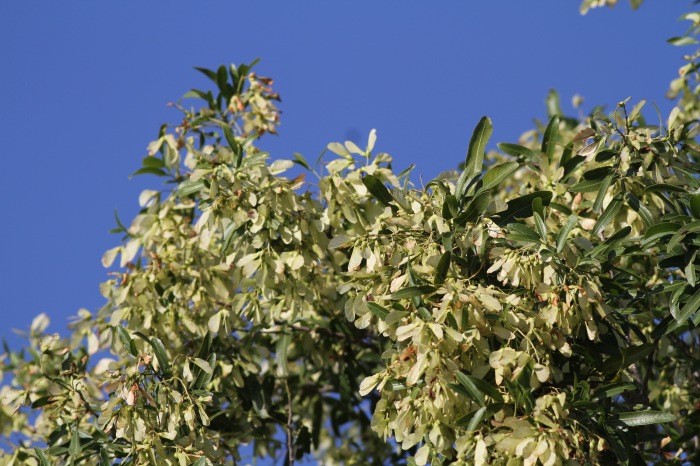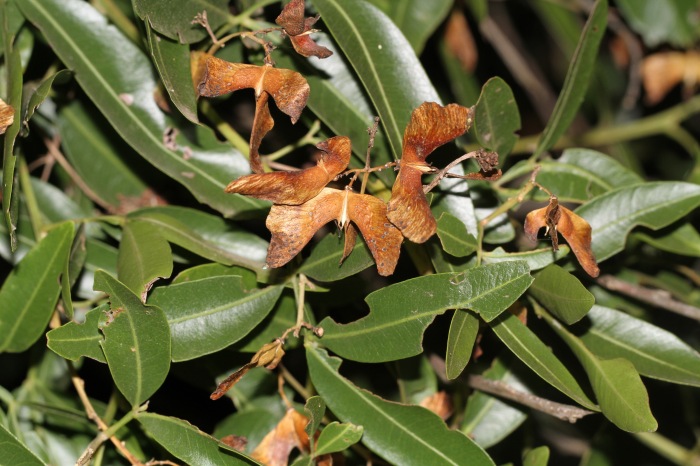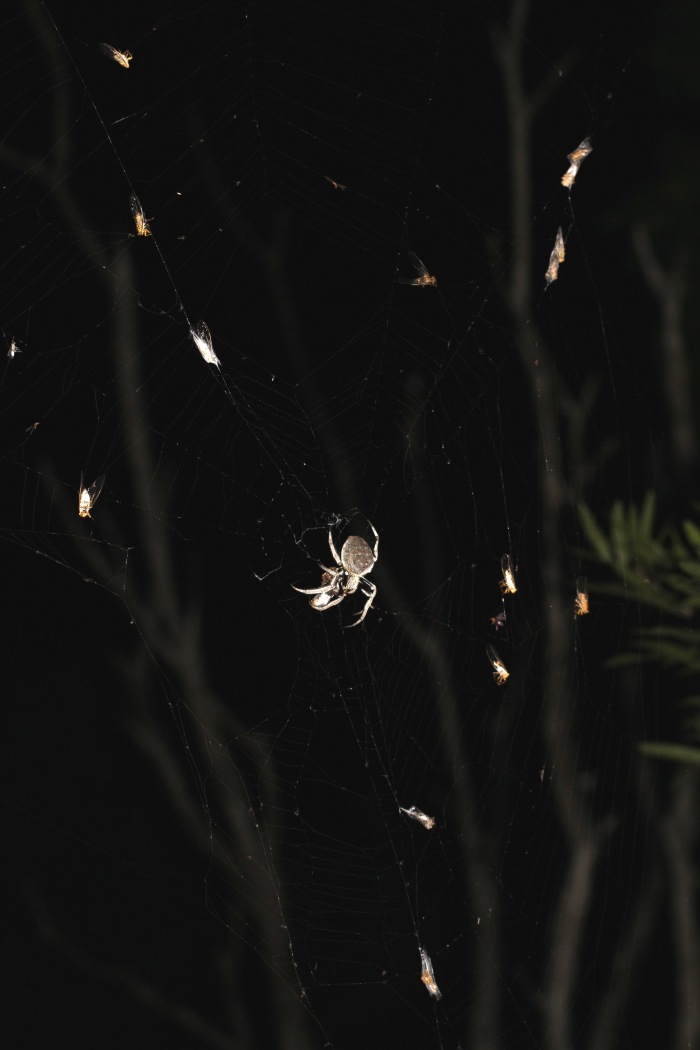I’ve been away for so much of the past two months, due to work, weddings and birthday trips, I had to re-read my last post to remind myself where I got up to! Despite the fact I’ve only been home a handful of days over this time, there were still plenty of highlights.
After the incredible 285 mm of rain we received in October, the 82 mm that fell in November seems paltry but is still well above average for the month. According to forecasts, the next week may bring as much as another 100 mm! I can’t recall the last time southeast Queensland experienced such a prolonged, wet spring.
Needless to say, the local plants (and weeds!) look fantastic. The Atalaya salicifolia that flowered so well a couple of months ago has produced abundant crops of seed. It has amazed me how quickly these have matured. Atalaya salicifolia is a tough species that has survived well in my planted areas. It also doesn’t seem to be eaten by our local Red-necked Wallabies, which is a plus. It should come as no surprise, then, that I’ve collected bagfuls of the seed for my home nursery!


The other species that FINALLY produced ripe fruits/seeds is Planchonella pohlmanniana. Readers might remember me talking about an individual tree that had held unripe fruit since at least October 2016. Well, sometime over the past month (I was away for work at the time, so missed it) the fruits ripened and fell. I still managed to collect plenty of seed from the ground below, so my 12 months of regular checks on the tree weren’t in vain. I have never heard of another plant, of any species, that takes more than 12 months after flowering for the fruits to develop!
Other plants that have flowered profusely over the past month or so included Flindersia australis and Psydrax odorata. The latter put on a particularly impressive display this year.


It’s not only the rain that came early this year, but the cicadas appear to be at least a month ahead of last year. There have been swarms of Grass Faeries (Parnkalla muelleri) all over our property for several weeks now, whereas last year the bulk of the population emerged around Christmas. Unlike last year, Cattle Egrets haven’t discovered the feast, but our local Garden Orb-weavers (Eriophora transmarina) must be the most well-fed spiders in the country!

Like this time last year, there have been quite a few fruit-doves (Topknot Pigeons, Rose-crowned Fruit-doves, Brown Cuckoo-doves) around home over the past month. One afternoon, there was even a White-headed Pigeon (Columba leucomela) roosting in a tree beside the house. This is not a common species around Pine Mountain, as they feed mainly on trees in the Lauraceae family, which is not well represented locally (with the exception of a couple of species of Cryptocarya). I generally encounter one at home about once every six months.

Brown Cuckoo-doves (Macropygia phasianella) seem to be less picky. After it ran out of Diplocyclos palmatus to eat (see a former post), this one found our tomatoes! We can’t complain, though, as we didn’t plant the tomatoes in the first place; they were probably spread by the very cuckoo-doves that ended up eating half the crop.

The biggest surprise visitor of the past month was a Painted Buttonquail (Turnix varius), which spent half an hour or so foraging around our bird baths the same afternoon that the White-headed Pigeon was present. This is a species I had never before seen in the vine scrubs of Pine Mountain, where they are generally replaced by their close relative, the Black-breasted Buttonquail (Turnix melanogaster). Painted Buttonquail are more common in the eucalypt forests around Kholo Gardens, about 5 km south (recall the one I saved from the road during winter). I suspect our visitor was simply that: a transient migrant. I haven’t seen it since. As is becoming a trend with me and local buttonquail, I had to settle for a less-than-ideal photo!
